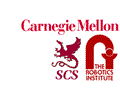|
|
|
To enable requester
agents to find provider agents in environments with heterogeneous
and dynamic information services, we have developed middle
agents, which serve to increase agent interoperability.
We have identified
different types of middle agents in the Internet, such as
matchmakers (yellow page services),
brokers, billboards, etc., and we have experimentally evaluated
different protocols for interoperation among providers, requesters
and various types of middle agents.
The following figure
shows the protocol for two different types of middle agents,
brokers and matchmakers:

We also have developed
protocols for distributed matchmaking, the process of finding
an appropriate provider through a middle agent. In matchmaking
-
Provider agents
advertise their capabilities such as know-how, expertise,
and so on, to middle agents.
-
Middle agents
store these advertisements.
-
A requester
asks some middle agent whether it knows of providers with
desired capabilities.
-
The middle
agent matches the request against the stored advertisements
and returns the result.
Matchmaking is
complicated by the fact that providers and requesters are
usually heterogeneous and incapable in general of understanding
each other. This difficulty gives rise to the need for a common
language for describing the capabilities and requests of software
agents in a convenient way. In order to address these problems,
we are developing an agent capability description language
(ACDL) known as LARKS. We have implemented LARKS and the associated
powerful matchmaking process, and are currently incorporating
it within our RETSINA multi-agent infrastructure.
|
|

